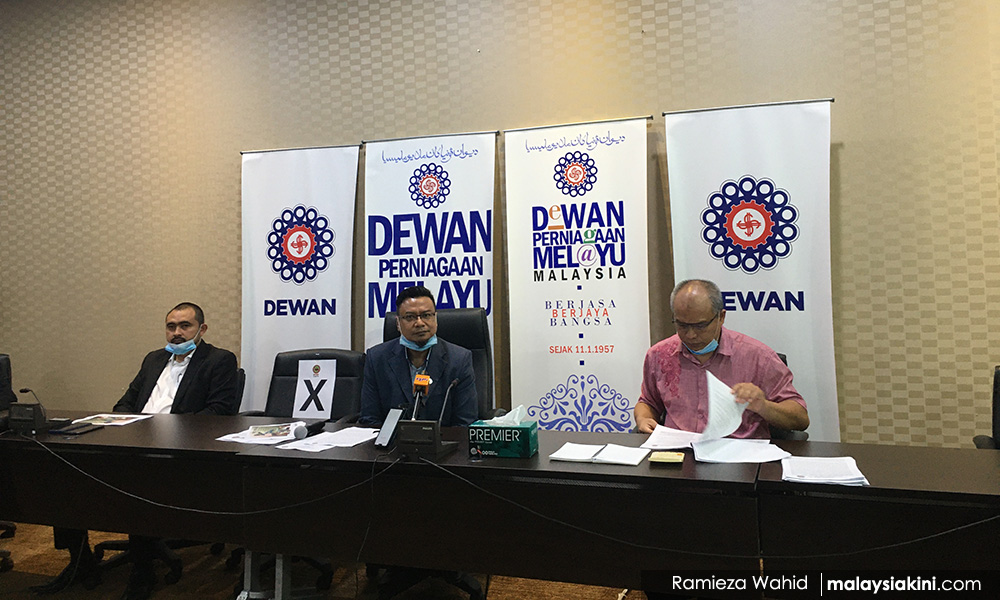The New Economic Policy (NEP) and other similar national economic policies continue to play an important role as wealth is still concentrated in the top five percent of the population, according to the Dewan Perniagaan Melayu Malaysia (DPMM).
Its president Abdul Halim Husin said the perception is that the NEP is the cause of inter-racial tension but the truth is that the economic restructuring process has not ended.
“The reality that NEP critics often fail to understand is that behind the NEP and other policies used to restructure the economy, our wealth is still concentrated among the top five percent which is dominated by a certain group.
“The NEP or similar policies need to be re-understood based on its true objective,” he told Malaysiakini.
He said there are many weaknesses in the implementation of the NEP that need to be fixed.
This does not even take into account many other components, such as the social system and an education system that does not focus on racial harmony, as well as racial discrimination in the hiring process, he added.
On the flip side, he said allowing the free market to decide everything and reducing the role of the government in the economy will only keep the economic power centralised to one particular group.
Halim believes that it is better to fix the policy's problems instead of getting rid of it because of an implementation issue, using the Malay saying: "Jangan bakar kelambu kalau marahkan nyamuk. Kita baiki kelambu kalau kita nak semua tidur nyenyak." (Do not burn the mosquito net when bitten, mend it instead for good sleep.)
The NEP, he claimed, had clearly and successfully reduced poverty quickly and it had the effect of distributing wealth among all areas and races, specifically the Malays and bumiputera.
However, he acknowledged that problems exist with the policy’s interpretation and implementation.
“In fact, the targets being chased is not based on the research of experts.
“Add onto that the problems of corruption and thievery that has led to leakages. The result is the income gap between races that will continue to widen, even within the race."

Halim said that the criticism against NEP and its effect on racial relations do not have a basis as the 30 percent target share of the national wealth for the bumiputera has not been achieved.
This perception is politically motivated, he said, to obstruct the NEP from achieving its target, and is often played up by those with personal interests.
“It does not help when this policy is misused by those who received the benefits, where the advantages are sold to others or often fail.
“So the weaknesses of the NEP’s implementation and the failure to handle the perception of the NEP’s objective may have affected the relations among races,” he added.
Besides, it is not like the Malays are unable to compete in the market, as there are now many Malays and bumiputera who have proven that they are competitive, he shared.
However, the problem arises when one starts with a far lower baseline. This system has caused the situation where one has a high likelihood of failure due to the income and wealth gap among races.
While Halim agrees that government aid should be given equally to all races, he noted that the wealth and household income gap will only continue to widen and the economic development of the bumiputera remains important.
“Equal aid should be given to those who need it. Poverty does not see skin colour. But this is not an excuse to allow the country’s wealth to be concentrated among certain groups or dominated by any race.
“We have to differentiate between getting rid of poverty and economic equality that needs the policy to encourage a more thorough distribution of wealth,” he said.
The NEP was tabled in Parliament 50 years ago on this day as part of the Second Malaysia Plan, where it was promoted as a 20-year strategy to reduce overall poverty rates and restructure societal imbalances attributed as a trigger that sparked the 1969 race riots.
Although it formally ended in 1990, it laid the foundation for race-based affirmative action which continues in national policies to this day. - Mkini




No comments:
Post a Comment
Note: Only a member of this blog may post a comment.